About the Japanese language
Before we start to learn Japanese let’s take a look at what the language is made of. The Japanese Language has 3 written systems: Hiragana, Katakana and Kanji.
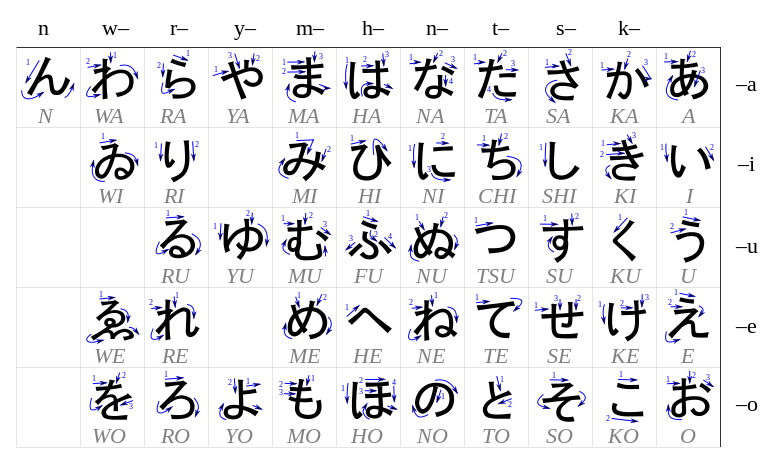
The image above shows all letters in the Hiragana alphabet, which is the most commonly used written system. You put letters together to form words, like しょうせつ (Light novel). It might look pretty difficult at first, but don’t worry! We’ll tackle these a couple of columns at a time.
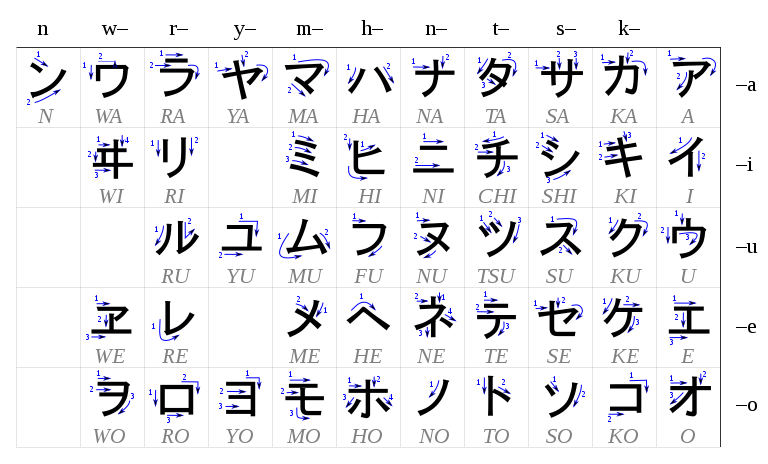
The above image shows Katakana, which is mainly used for loan words like レストラン (restaurant) and コミック (comic). As you might have guessed, each Katakana letter corresponds to one Hiragana letter. Simple, isn’t it? And then we have Kanji…
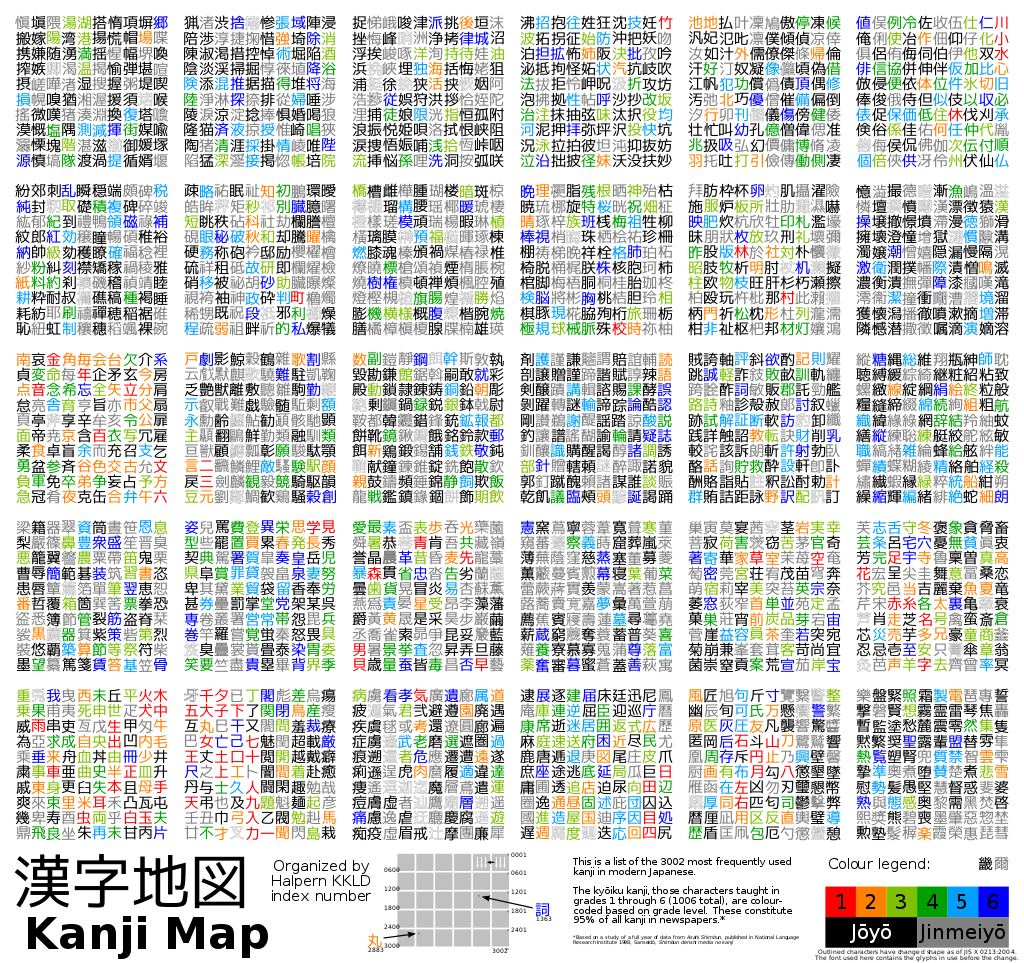
No kidding. This shows all 3002 Kanji characters that Japanese middle school students have to learn. But once again, don’t be alarmed, you can take your time to learn them. Certain mobile applications, as I will mention later, will also help. Anyway, Kanji are like Chinese characters that each have different meanings and pronunciations. Kanji characters take the place of Hiragana in written sentences. For instance, instead of writing しょうせつ for light novel, we can write 小説.
Learning Japanese
Now that you know what the Japanese language is like, we can start learning!
This site will have multiple levels of difficulty, and in each level, there are numerous chapters. Follow the chapters in order, and you should be able to get a good understanding of the Japanese language.
On top of those written lectures, we offer worksheets and solutions (for a small cost), so that you can practice what you have just learnt.
Of course, it would be great to practice Japanese outside this site. For instance, after reaching a certain level, you could read the raw versions of manga and light novels, or watch anime without subtitles. Remember, practice is key to mastering a language.
Useful applications
1. JED Japanese Dictionary
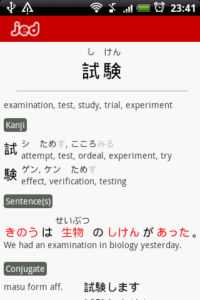 The most useful tool in learning another language is, naturally, a dictionary, and JED does more than that. It’s an English-Japanese and Japanese-English dictionary all rolled into one, and even provides example sentences and conjugations.
The most useful tool in learning another language is, naturally, a dictionary, and JED does more than that. It’s an English-Japanese and Japanese-English dictionary all rolled into one, and even provides example sentences and conjugations.
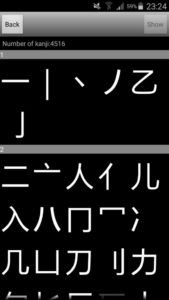
Another useful function is Search Kanji by Radicals. If you come across a Kanji that you don’t recognise, you can look for the correct character by filtering by the radicals (combinations of strokes) of the Kanji.
Apple users could try using Japanese Dictionary – Dict Box.
2. Anki Aniki

Remember all those Kanji from that huge chart earlier? Of course you don’t. But with Anki Aniki, you can memorise the Kanji easily. Every day, you learn a number of Kanji and take a quiz on the Kanji you’ve learnt so far. There are 5 levels of Kanji to learn, from N5 to N1 (with N5 being the easiest). I’ve used this app from N3 to N1 and it has really helped me prepare for my Japanese Language Proficiency Tests.
Unfortunately, Anki Aniki is exclusive to Android, but for iPhone users, Learn Japanese! – Kanji could be a good substitute.
This brings us to the end of our lesson! Please comment if you have difficulty with the apps, and we hope to see you in Chapter 1 – Hiragana!

Thanks for your work, I’ll start with memorizing hiragana and katakana!
This website is great .
wow this is sure useful for android users especially like me. and this website is one of my favorites…